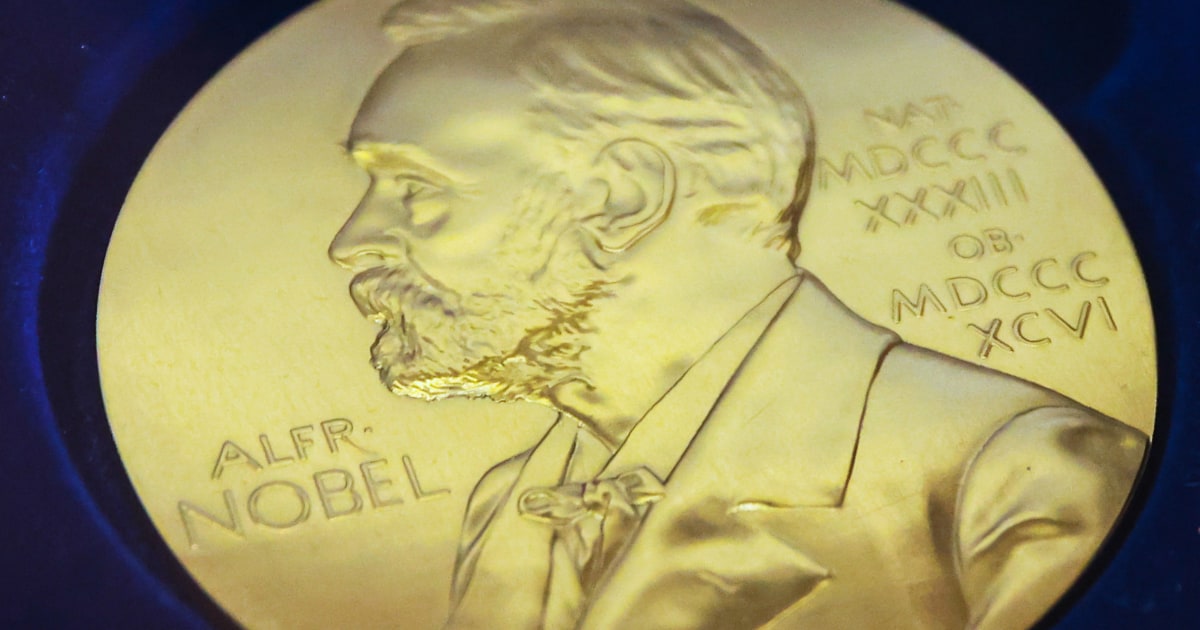STOCKHOLM — Three American-based scientists have been awarded the Nobel Prize in Physics for groundbreaking work in quantum mechanics that could pave the way for advancements in quantum computing and other technologies.
The Royal Swedish Academy of Sciences announced Tuesday that John Clarke, Michel H. Devoret and John M. Martinis would share the prestigious prize for their experiments that demonstrated quantum physics at work in macroscopic systems.
Clarke, an 83-year-old British physicist who conducted his research at the University of California, Berkeley, expressed astonishment at the honor. “To put it mildly, it was the surprise of my life,” Clarke told reporters by phone shortly after the announcement.
He praised his fellow laureates, noting that “their contributions are just overwhelming.” Clarke highlighted the broader impact of their work, saying, “Our discovery in some ways is the basis of quantum computing. Exactly at this moment where this fits in is not entirely clear to me.”
Speaking from his cellphone, Clarke added a relatable touch: “One of the underlying reasons that cellphones work is because of all this work.”
Martinis, an American researcher formerly at the helm of Google's quantum computing team, carried out his prize-winning work at the University of California, Santa Barbara. Devoret, a French scientist who is the chief scientist at Google Quantum AI and is based at Yale University, also conducted research at UC Santa Barbara.
The trio's experiments in the 1980s involved superconducting electronic circuits, showing that quantum mechanics could influence everyday-scale objects under specific conditions, according to the Nobel committee.
Olle Eriksson, chair of the Nobel Committee for Physics, emphasized the ongoing relevance of their discoveries. “It is wonderful to be able to celebrate the way that century-old quantum mechanics continually offers new surprises,” Eriksson said. “It is also enormously useful, as quantum mechanics is the foundation of all digital technology.”
The committee stated that the laureates' work opens doors to “the next generation of quantum technology, including quantum cryptography, quantum computers, and quantum sensors.”
This year's physics prize follows a pattern of recognizing foundational contributions to modern technology. Last year, artificial intelligence pioneers John Hopfield and Geoffrey Hinton received the award for their role in developing the building blocks of machine learning.
The physics Nobel is the second to be awarded this week. On Monday, the Nobel Prize in Physiology or Medicine went to Mary E. Brunkow, Fred Ramsdell and Dr. Shimon Sakaguchi for their discoveries on how the immune system distinguishes between harmful germs and the body's own cells.
The announcements are part of the annual Nobel season, with the Peace Prize set to be revealed on Friday. The prizes, established by the will of Swedish inventor Alfred Nobel, have been awarded since 1901 and come with a cash award of 11 million Swedish kronor, about $1.1 million, to be shared among the winners.
Quantum mechanics, the branch of physics dealing with the behavior of particles at the atomic and subatomic levels, has long been a cornerstone of scientific innovation. The laureates' work built on theories dating back to the early 20th century, including those by Albert Einstein and Niels Bohr, demonstrating quantum effects in larger systems through superconductivity.
Superconductors, materials that conduct electricity without resistance at very low temperatures, allowed the scientists to observe phenomena like quantum tunneling and superposition in circuits visible to the naked eye. This bridged the gap between the bizarre world of quantum theory and practical applications.
Devoret and Martinis' affiliations with Google underscore the commercial potential of their research. Google Quantum AI is actively pursuing quantum computers that could solve complex problems far beyond the capabilities of classical computers, such as drug discovery and climate modeling.
While Clarke noted uncertainty about the exact role of their discoveries in current quantum computing efforts, experts say the foundational experiments have influenced ongoing developments. The Nobel committee's citation specifically credits the trio for revealing “quantum physics in action” through their innovative setups.
The award highlights the international nature of scientific achievement. Clarke, originally from Britain, has spent much of his career in the U.S.; Devoret hails from France; and Martinis is American. All three have ties to leading California universities, reinforcing the state's role as a hub for physics research.
In a broader context, quantum technologies are seen as a strategic priority globally. Governments and companies are investing billions in quantum research, with potential applications in secure communications via quantum cryptography and ultra-precise measurements with quantum sensors.
Eriksson's comments reflect the enduring wonder of quantum mechanics, which continues to yield surprises more than a century after its inception. The field underpins everything from semiconductors in smartphones to lasers and MRI machines in medicine.
As quantum computing edges closer to reality, challenges remain, including maintaining quantum states without interference from the environment. The laureates' 1980s experiments provided early proofs of concept that have inspired subsequent generations of researchers.
Looking ahead, the Nobel recognition could accelerate funding and interest in quantum fields. With the Peace Prize announcement looming, attention turns to global issues, but the physics award serves as a reminder of science's role in driving technological progress.
The winners will receive their medals and diplomas at a ceremony in Stockholm on Dec. 10, the anniversary of Alfred Nobel's death. In the meantime, the scientific community celebrates these contributions that, as Clarke put it, make everyday technologies like cellphones possible.
“It is wonderful to be able to celebrate the way that century-old quantum mechanics continually offers new surprises. It is also enormously useful, as quantum mechanics is the foundation of all digital technology.” — Olle Eriksson, chair of the Nobel Committee for Physics
This year's laureates join a distinguished list of physics Nobelists, including Marie Curie and Enrico Fermi, whose work has shaped the modern world. As quantum mechanics evolves from theory to application, the implications for society could be profound, from revolutionizing computing to enhancing national security through unbreakable encryption.
While the exact timeline for practical quantum computers remains uncertain, the foundational work honored Tuesday brings that future a step closer.
